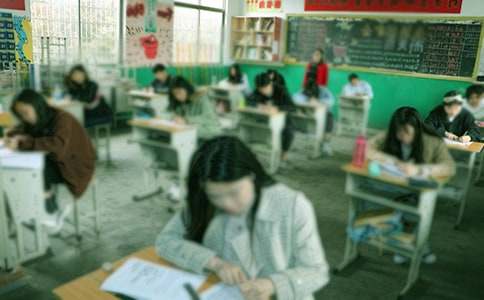- 相关推荐
2017托福阅读考试冲刺练习
勤劳一日,可得一夜安眠;勤劳一生,可得幸福长眠。以下是小编为大家搜索整理的2017托福阅读考试冲刺练习,希望能给大家带来帮助!更多精彩内容请及时关注我们应届毕业生考试网!

PASSAGE 32
By 1776 the fine art of painting as it had developed in western Europe up to this time had been introduced into the American colonies through books and prints, European visitors and immigrants, and traveling colonists who brought back copies (and a few original) of old master paintings and acquaintance with European art institutions.
By the outbreak of the Revolution against British rule in 1776, the status of the artists had already undergone change. In the mid-eighteenth century, painters had been willing to assume such artisan-related tasks as varnishing, gilding teaching, keeping shops, and painting wheel carriages, houses, and signs. The terminology by which artists were described at the time suggests their status: "limner" was usually applied to the anonymous portrait painter up to the 1760's; "painter" characterized anyone who could paint a flat surface. By the second half of the century, colonial artists who were trained in England or educated in the classics rejected the status of laborer and thought of themselves as artists. Some colonial urban portraitists, such as John Singleton Copley, Benjamin West, and Charles Wilson Peale, consorted with affluent patrons. Although subject to fluctuations in their economic status, all three enjoyed sufficient patronage to allow them to maintain an image of themselves as professional artists, an image indicated by their custom of signing their paintings. A few art collectors James Bowdoin III of Boston, William Byrd of Virginian, and the Aliens and Hamiltons of Philadelphia introduced European art traditions to those colonists privileged to visit their galleries, especially aspiring artists, and established in their respective communities the idea of the value of art and the need for institutions devoted to its encouragement.
Although the colonists tended to favor portraits, they also accepted landscapes, historical works, and political engravings as appropriate artistic subjects. With the coming of independence from the British Crown, a sufficient number of artists and their works were available to serve nationalistic purposes. The achievements of the colonial artists, particularly those of Copley, West, and Peale, lent credence to the boast that the new nation was capable of encouraging genius and that political liberty was congenial to the development of taste — a necessary step before art could assume an important role in the new republic.
1. What does the passage mainly discuss?
(A) European influence on colonial American painting
(B) The importance of patronage to artist
(C) The changing status of artists in the American colonies in the eighteenth century
(D) Subjects preferred by artists in the American colonies in the eighteenth century.
2. The word "outbreak" in line 5 is closest in meaning to
(A) cause
(B) beginning
(C) position
(D) explanation
3. The word "undergone" in line 6 is closest in meaning to
(A) led to
(B) transformed
(C) preferred
(D) experienced
4. According to the passage , before the American Revolution the main task of limners was to
(A) paint wheel carriages
(B) paint portraits
(C) varnish furniture
(D) paint flat surfaces
5. It can be inferred from the passage that artists who were trained in England
(A) considered artists to be superior to painters
(B) barely painted portraitists
(C) were often very wealthy
(D) imitated English painters
6. The word "consorted" in line 14 is closest in meaning to
(A) made decisions
(B) studies
(C) agreed
(D) associated
7. The word "sufficient" in line 16 is closest in meaning to
(A) adequate
(B) temporary
(C) friendly
(D) expensive
8. According to the passage , artists such as Copley, West and Peal signed their paintings
(A) increased the monetary value of the paintings
(B) made it more difficult for other artists to copy the paintings
(C) supported the artists' image of professionalism
(D) distinguished colonial American artists from European artists
9. The author mentions James Bowdoin III and William Byrd in line 17 as examples of which of the following?
(A) Art gallery owners who displayed only European art
(B) Art collectors who had a profound influence on American attitudes toward art
(C) Artists who gave financial support to other artists
(D) Patrons whose helped to encourage artisans to become artists
10. With which of the following would the author be most likely to agree?
(A) Countries that have not had a political revolution are unlikely to develop great art.
(B) The most successful art collectors are usually artists themselves.
(C) The value of colonial American paintings decreased after the Revolution.
(D) Colonial artists made an important contribution to the evolving culture of the new nation.
参考答案:CBDBA DACBD
【托福阅读考试冲刺练习】相关文章:
最新托福阅读考试练习题09-13
托福考试阅读基础练习词汇10-18
托福考试阅读真题模拟练习07-16
商业托福英语考试中级阅读练习题08-05
2017年托福考试阅读冲刺模拟题07-05
2017年托福考试阅读理解专项练习及答案08-21
英语专业四级考试阅读冲刺练习07-04
2017年托福备考阅读精选练习题09-13
托福口语考试8分练习方法09-29
托福口语考试预测练习题09-22